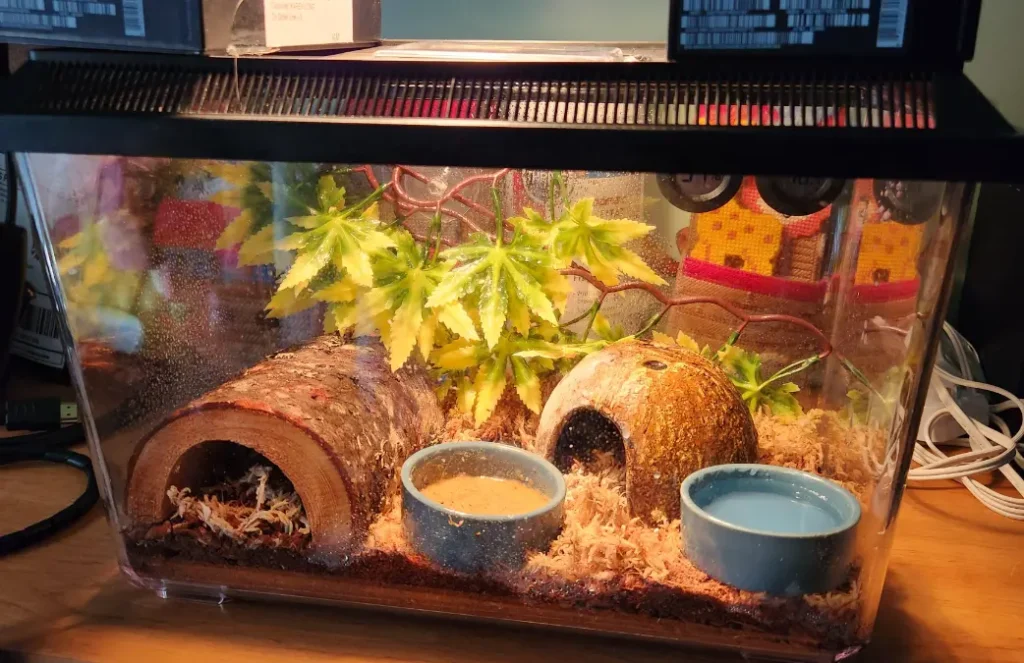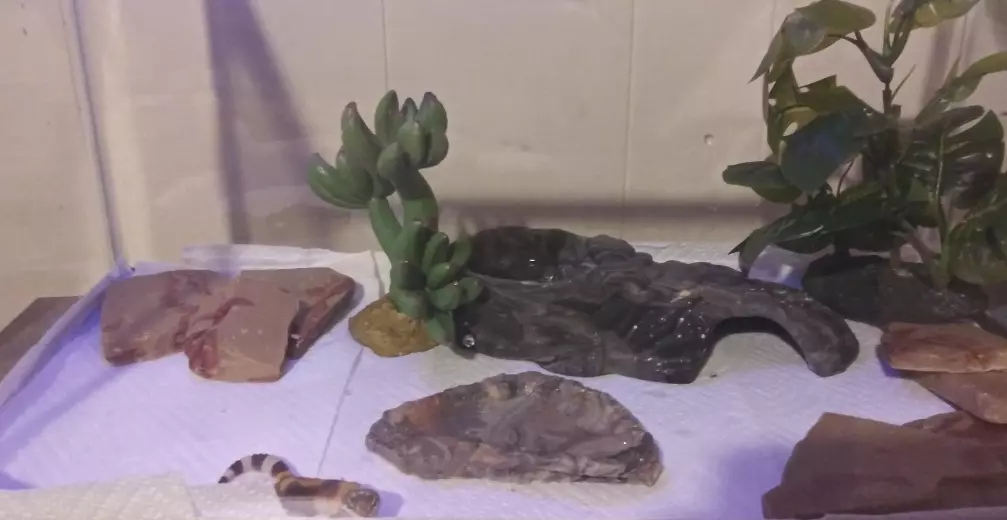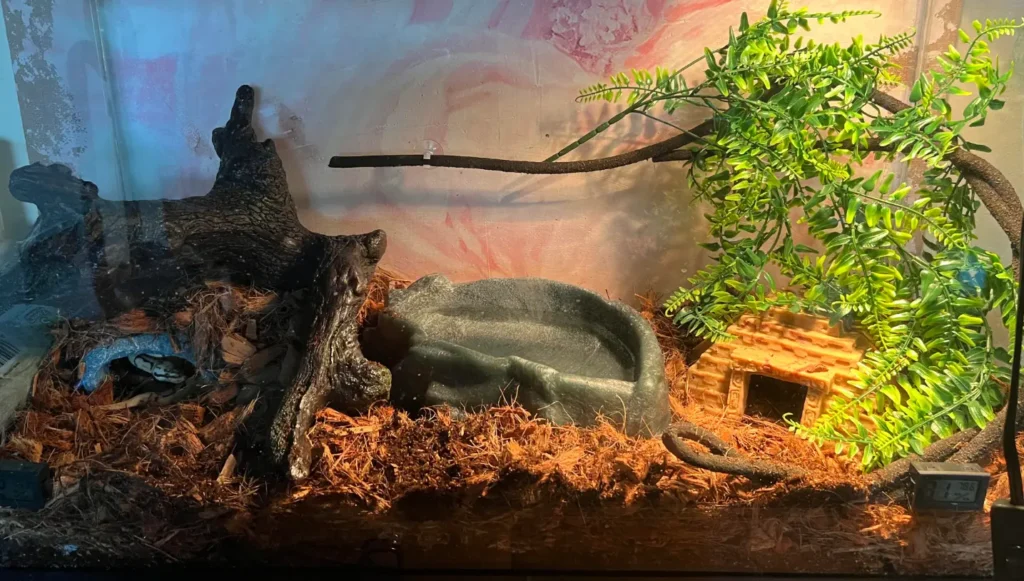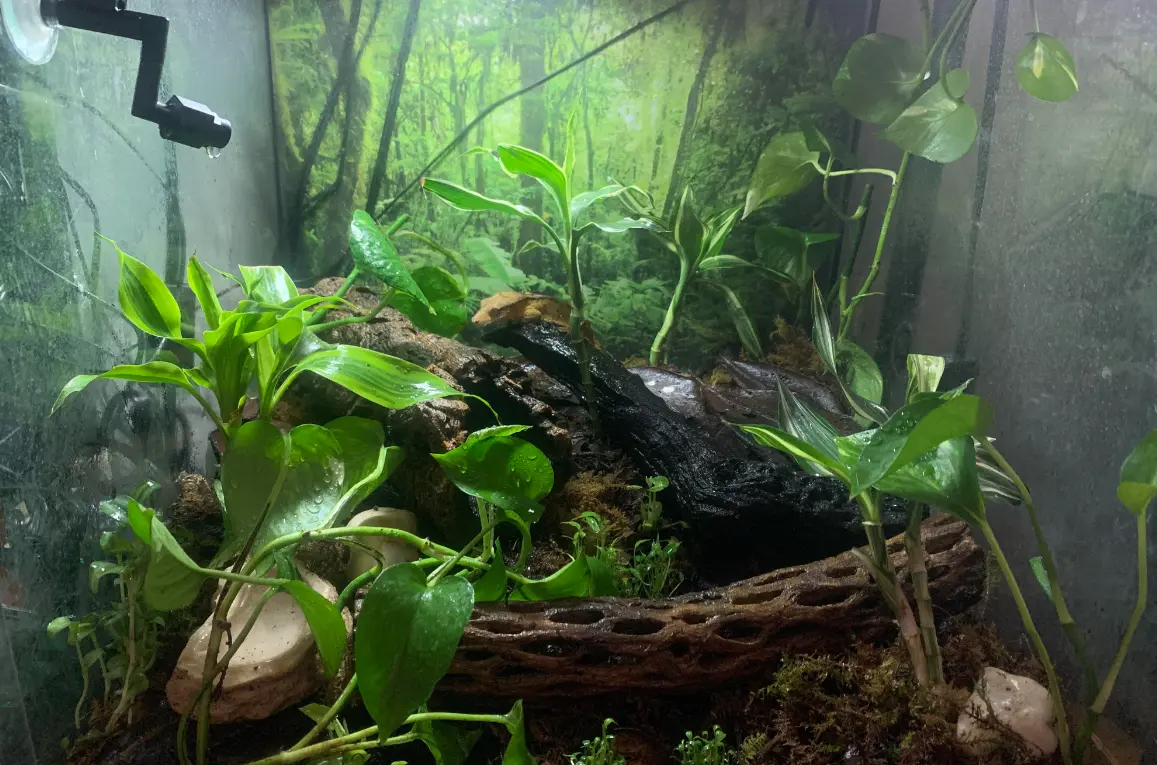The stuff at the bottom of your pet’s house is called substrate. It’s where your crested gecko walks, hides, and digs.
So, it’s very important to choose the right substrate for the health and well-being of your crestie.
Here are the best Substrate For Crested Gecko:
- Paper Towel: It’s a cheap option as long as you change regularly and make sure the humidity isn’t dropping too low (it holds less humidity than other substrates). Orchid bark is another good one if you’re concerned about them eating substrate, the chunks are far too big for that.
- Jungle Mix: This is my top pick and I use this in my two enclosures. For the best results, consider mixing different substrates. Jungle Mix mainly consists of mosses. If you decide to use it, you can add coco husk for volume and some charcoal if you’re planning to create a bioactive setup with springtails. Don’t forget to cover the soil with a layer of leaf litter to prevent your gecko from ingesting anything.
How to Choose The Best Substrate For Your Crested Gecko

There is no definitive answer to what is the best substrate, as different substrates have different pros and cons, and different crested geckos have different preferences and needs.
However, there are some factors that you can consider when choosing a substrate for your crested gecko, such as:
1) Consider the pros and cons of each substrate

As we discussed above, each substrate has its own advantages and disadvantages, such as humidity, aesthetics, safety, cost, availability, and maintenance.
Weigh these factors according to your own situation and preference, and choose a substrate that suits your needs and goals.
For example, if you want a natural and stimulating habitat for your crested gecko, you might choose orchid bark or ABG mix.
But if you want a simple and cheap substrate for your crested gecko, you might choose paper towels or coco husk.
2) Consider the size, age, and health of your crested gecko

Hatchlings and juveniles are more likely to eat substrate, which can cause impaction and digestive problems.
Therefore, you should choose a substrate that is safe and digestible for them, such as paper towels or coco husk.
On the other hand, adult crested geckos are less likely to eat substrate, but they still need a substrate that is comfortable and hygienic for them, such as orchid bark or ABG mix.
Sick or injured crested geckos need a substrate that is easy to clean and prevent infections, such as paper towels or coco husk.
3) Consider the humidity, temperature, and ventilation of the enclosure
Different substrates have different effects on the humidity, temperature, and ventilation of your enclosure, which can affect the health and comfort of your crested gecko.
For example, substrates that hold humidity well, such as orchid bark or ABG mix, can help create a humid and tropical environment for your crested gecko, but they can also cause mold and bacteria growth if not ventilated properly.
On the other hand, substrates that dry out quickly, such as paper towels or coco husk, can help prevent mold and bacteria growth.
Still, they may also result in dehydration and stress for your crested gecko if not regularly misted.
F.A.Q.s
Q: How often should I change the substrate for my crested gecko?
The frequency of changing the substrate for your crested gecko depends on the type of substrate you use, the size of your enclosure, the number of crested geckos you have, and the cleanliness of your enclosure.
As a general rule, change the substrate at least once a month, or more often if it becomes dirty, smelly, moldy, or infested.
Also spot-clean the substrate daily, removing any feces, food, or debris.
Q: Can I use only sand as a substrate for my crested gecko?
No, you should not use only sand as a substrate for your crested gecko.
Sand is not a natural or suitable substrate for crested geckos, as it can cause several problems, such as impaction, dehydration, irritation, infection, and overheating.
Sand can also be dusty and messy, and it does not hold humidity well.
Q: Can I mix different substrates for my crested gecko?
Yes, you can mix different substrates for your crested gecko, as long as they are compatible and safe for your crested gecko.
Mixing different substrates can offer some benefits, such as improving the drainage, aeration, moisture retention, and appearance of your substrate.
However, also be careful of some drawbacks, such as increasing the risk of impaction, inconsistency, and contamination.


[…] Infection: After tail loss, use paper towels instead of bedding to prevent loose substrate from causing infections. Watch the tail stump for signs of infection, and consult a vet if […]
[…] a moisture-retaining substrate like coconut fiber, reptile bark, or bioactive mixes. This helps maintain […]